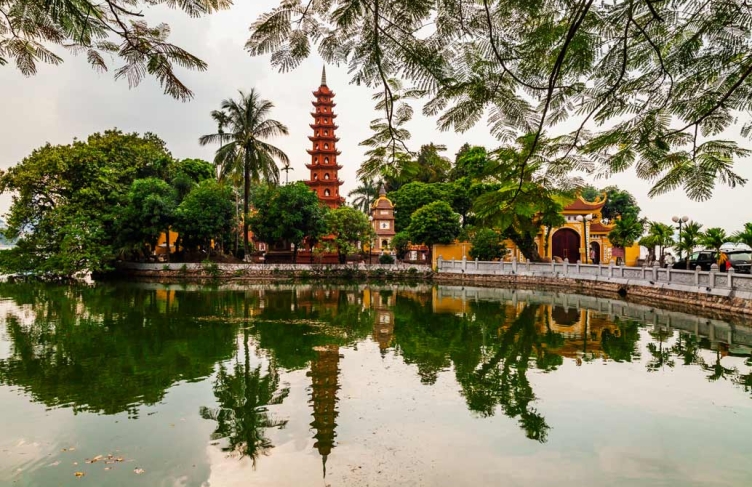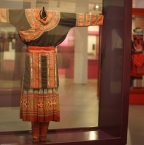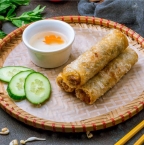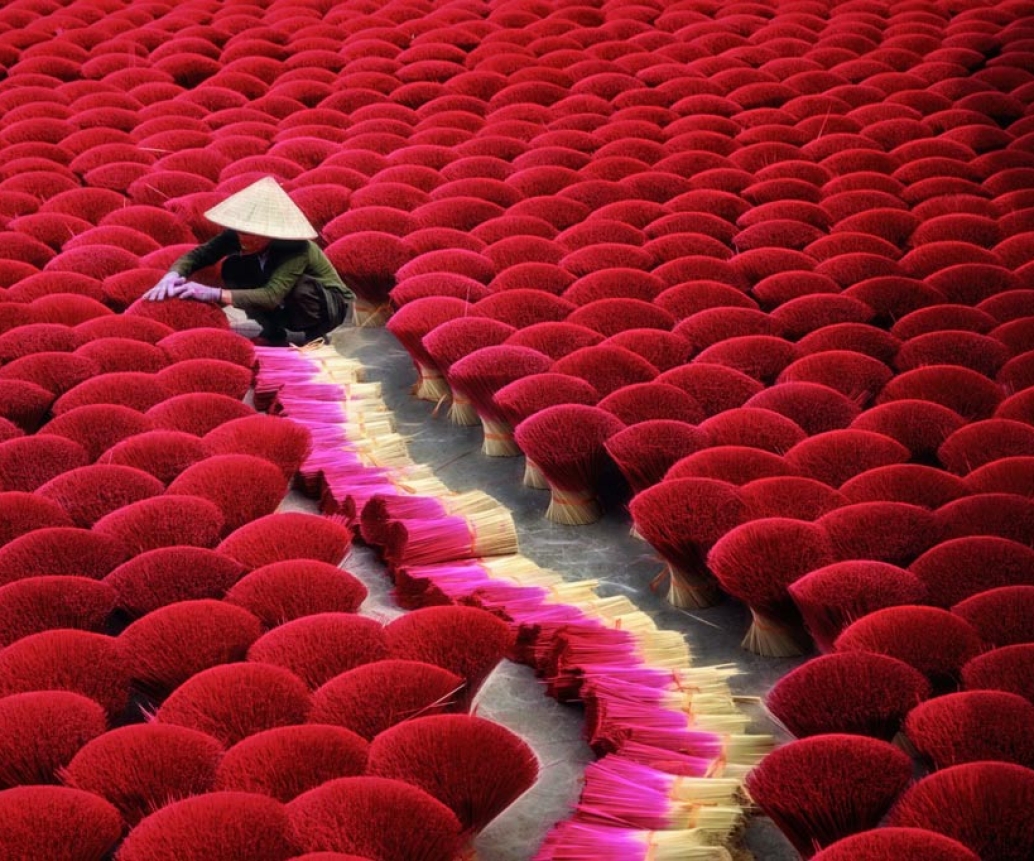
Top 6 Traditional Villages In Hanoi Must Visit
Several villages near Hanoi provide an enthralling look into Vietnam's rich cultural heritage and traditional way of life. From the ancient houses and rich history of Duong Lam to the skilled artisans crafting ceramics in Bat Trang, each village offers a unique cultural experience.
Cu Da Village is well-known for its soy sauce production, providing insights into the historical technique of soy sauce manufacture in Vietnam. Van Phuc Silk Village exhibits the skill of silk weaving, demonstrating the precise process involved in producing this exquisite fabric.
These villages are known for their specialized crafts, historical significance, and preservation of age-old traditions, providing visitors with an immersive experience steeped in local culture.
Let’s find out the top villages in Hanoi that you must visit at least once with Hanoi Voyages!
Table of Contents
Top villages in Hanoi must visit
Duong Lam ancient village
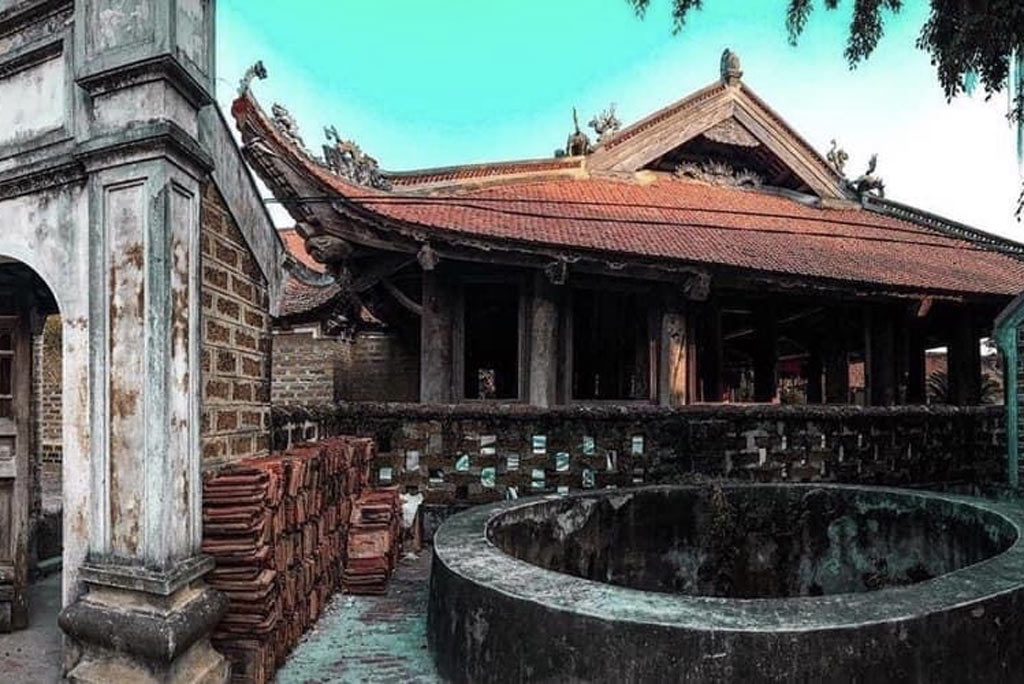
Duong Lam Ancient Village, located about 44 kilometers from Hanoi, is a picturesque rural gem renowned for its well-preserved ancient houses, historical value, and cultural heritage. This village is often considered a living museum, offering a captivating journey back in time to experience traditional Vietnamese rural life.
What sets Duong Lam apart is its collection of ancient houses, some dating back hundreds of years, constructed in the typical northern Vietnamese architectural style. Visitors can explore these well-preserved structures, known as "nha ruong," which are made of laterite walls and wooden pillars, showcasing traditional craftsmanship and architectural elegance.
You can explore Mong Phu village gate while visiting Duong Lam ancient village. It is Duong Lam Ancient Village's oldest architectural feature. The Mong Phu communal house is another must-see attraction. It was built in the village center around 380 years ago. The communal house is built in a distinctive ethnic style, resembling a house on stilts with timber floors elevated above the ground.
Duong Lam Ancient Village offers a serene escape from the bustle of urban life, inviting visitors to experience Vietnam's rich cultural heritage, architectural beauty, and the timeless rhythms of village life preserved over time.
Bat Trang Pottery

Bat Trang, located just outside Hanoi, is a historic village renowned for its centuries-old tradition of pottery-making. Visitors come to see the intricate craft and artistic heritage of Vietnamese pottery in this village, which has earned a reputation for producing exquisite ceramics.
In Bat Trang, artisans create a wide range of ceramics, including bowls, plates, vases, and figurines, using traditional techniques passed down through generations. The clay in the village is sourced locally and hand-shaped, showcasing intricate designs and patterns, often with blue and white glazes or colorful hand-painted motifs.
The village also houses several shops and markets where visitors can purchase a wide array of beautiful ceramic products, making Bat Trang a haven for those seeking unique and authentic Vietnamese pottery as souvenirs or decorative pieces.
There is no entrance fee to visit Bat Trang Pottery Village. You only have to pay if you want to go shopping or participate in a pottery workshop. A ceramics class will only cost you about 20,000 VND. To bring your handmade item home, you will need to pay an additional 35,000 - 50,000 VND per item.
Cu Da village
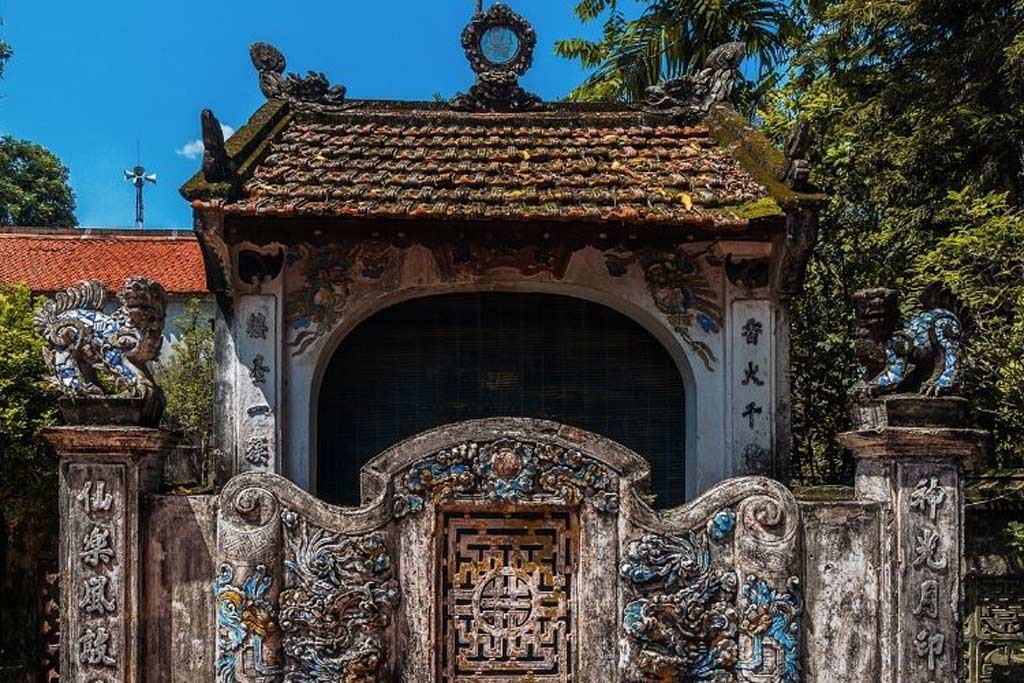
Cu Da Village, located near Hanoi, is renowned for its traditional soy sauce production, historical architecture, and cultural heritage. This village has preserved its centuries-old tradition of making soy sauce, offering visitors a glimpse into this ancient craft.
The village is characterized by its well-preserved ancient houses, some dating back over a hundred years. These traditional Vietnamese-style houses have wooden pillars, tile roofs, and intricate carvings, reflecting the village's rich history and cultural significance.
Cu Da is particularly famous for its artisanal soy sauce production, which has been passed down through generations. Visitors can see the traditional process of making soy sauce, from fermenting soybeans and wheat to aging the mixture in large wooden barrels. Many families in the village continue this time-honored practice, maintaining the authenticity of the soy sauce-making tradition.
Van Phuc silk village

Van Phuc silk village, about 10 kilometers south of Hanoi center, is a well-known destination for traditional silk weaving. Van Phuc Silk Village has been around for over 1000 years. There are ancient houses, old banyan trees, water wharfs, communal yards, and markets here. It was first shown to the public at the Marseille fair in 1931 and the Paris fair in 1932.
Van Phuc Silk Village is a beautiful place that combines ancient traditions with modern, colorful features. There are many interesting and appealing experiences to be had when visiting Van Phuc Ha Dong silk village, including the umbrella road, mural street, and the Van Phuc pagoda.
The village also offers opportunities for visitors to purchase authentic silk products directly from local workshops and stores. These silk items, known for their softness, durability, and beautiful textures, make for exceptional souvenirs or personal mementos.
Quang Phu Cau Incense village
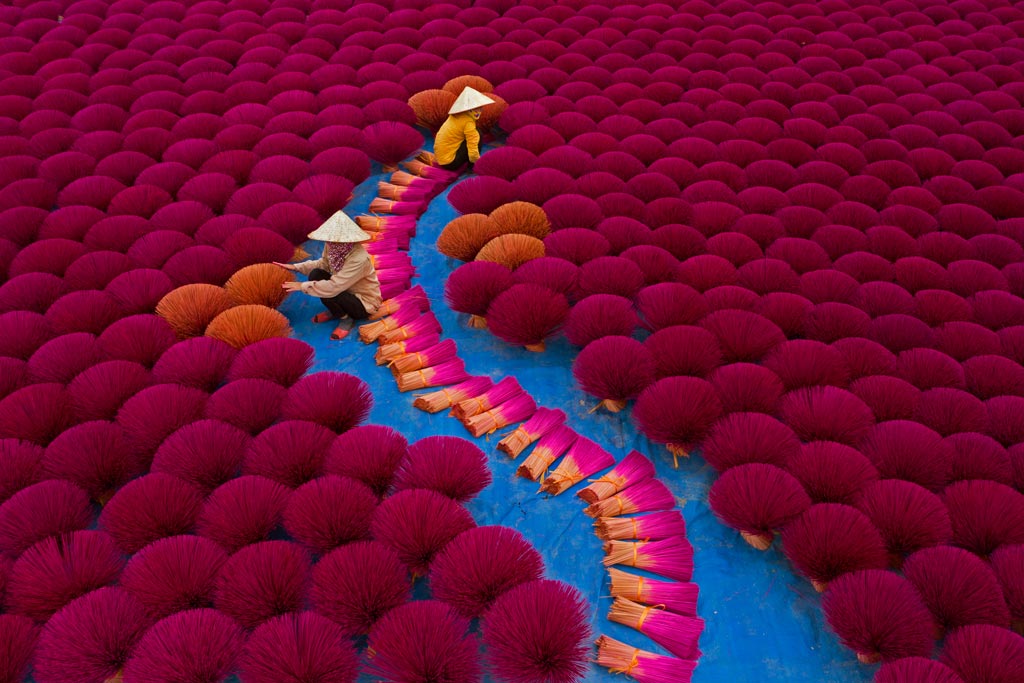
Quang Phu Cau, also known as the Incense Making Village, is a historic village near Hanoi that specializes in the traditional craft of incense production. This village has a long history of producing high-quality incense sticks using age-old techniques passed down through generations.
The artisans in Quang Phu Cau make incense sticks from natural ingredients such as sandalwood, agarwood, cinnamon, and other fragrant herbs. These ingredients are carefully mixed, rolled, and shaped into incense sticks before being dried and ready for use.
Visitors to Quang Phu Cau have the opportunity to witness the entire incense-making process, from the preparation of raw materials to the skilled hands of artisans shaping the incense sticks. Many workshops in the village welcome visitors and show them the meticulous craftsmanship that goes into making these fragrant offerings.
Chuong village (Chuong conical hat village)
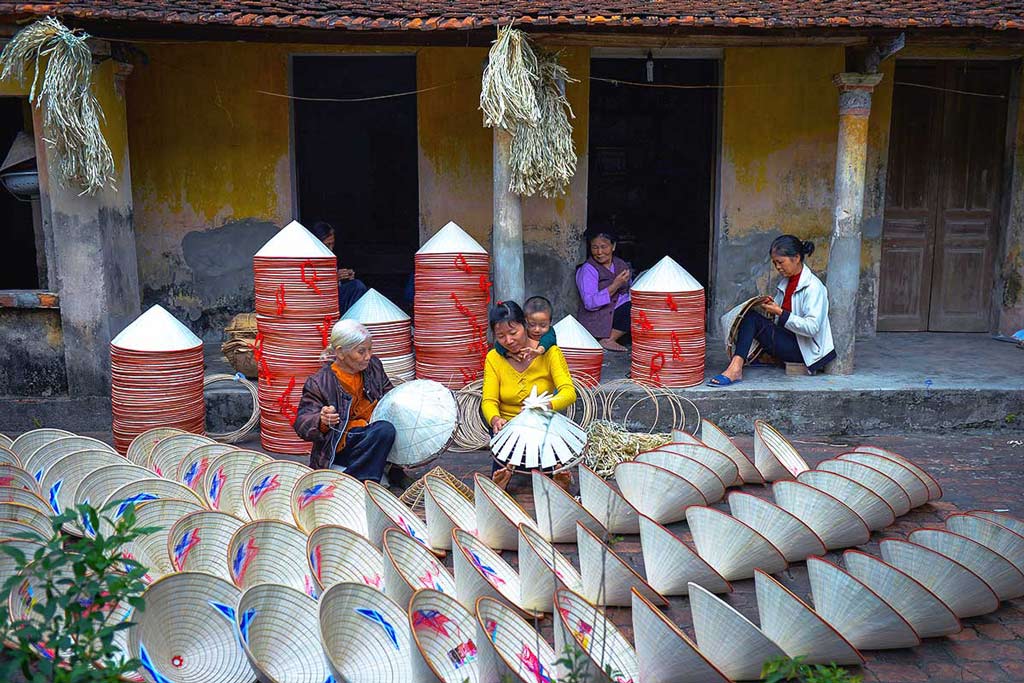
Chuong Village is a famous craft village throughout the country, with a long history of producing conical hats. For generations, villagers have quietly worked to keep this tradition and maintain their reputation for producing high-quality hats.
The beauty of tranquility and contemplation comes from the tiled-roofed houses, the rustic roads, adorned with beautiful, elaborate hats, everywhere is a beautiful place for tourists to stop and admire or take pictures.
You will be able to witness the traditional conical hat production process if you visit Chuong village. The main material to make the conical hat is from fresh palm leaves imported from some provinces such as Quang Binh and Quang Tri and hat frames made of bamboo slats are available locally. In addition, visitors can take part in festivals in Chuong village. The biggest festival of Chuong village takes place on the 10th day of the 3rd lunar month and usually lasts three days from March 9 to 11. According to the village's tradition, every 5 years there will be a large procession from the beginning to end of the village.
Travel tips when visiting villages in Hanoi
When visiting villages around Hanoi to explore traditional crafts and cultural heritage, consider these travel tips for a rewarding experience
| Top 4 tips when visiting villages in Hanoi |
|










